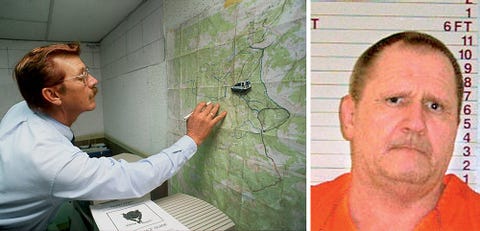
Great Basin Serial Killer
On February 9, in a suburb of Salt Lake City, an Hispanic woman was attacked and murdered while alone in her apartment. Restoretools pkg files. Incredibly, the same thing happened twice, in both 2006 and 2008.
Rom update utility download. Windows Phone is not my cup of tea.
And though at first the repeated circumstances were taken to be a grisly coincidence, DNA analysis of evidence collected at both scenes would later prove that the murders were committed by the same man, whom the media promptly dubbed the “.” In the 2006 case, the victim Sonia Mejia was pregnant when she was assaulted and strangled. A few items were stolen from her apartment, but none of them ever turned up. In the 2008 case, Damiana Castillo was strangled in her apartment about a mile away from Mejia’s place. In both cases, there was no sign of forced entry- and while the investigative agencies involved were and still are extremely reluctant to label the perpetrator a “serial killer,” that certainly seems to be an apt description of a man who kills two women in a very similar fashion, on the same date, two years apart. While police have a of the killer, they’re not saying how they arrived at it; and while they have a DNA profile, they don’t have a match for that profile—meaning that unless the perpetrator is eventually made to surrender a DNA sample for some unrelated crime, he may never be caught. The twin cities of Texarkana, Texas, and Texarkana, Arkansas, have only had one reported case of serial murder, and it was a case that in fear for several months in 1946.
The attacks came at night on the weekends, roughly every few weekends for that period; in total, five people were killed and three more injured. The case so captured the public imagination that thirty years later, it inspired the horror film. Only the first victims, Mary Jeanne Larey and Jimmy Hollis, were able to give a description of their attacker—and it was. They described a six-foot-tall man with a plain white sack over his head, which had holes cut out for the eyes and mouth. It isn’t known whether or not the killer wore this mask during the other attacks; the only other survivor didn’t get a look. The killer used a.32 caliber pistol, nearly always killed three weeks apart, and always carried out his murders in the dead of night.
Bodies found in Yosemite serial killer case. Located in the Great Basin desert, few settlers chose to live in Nevada after the United States acquired the territory at the end of the Mexican.
After one of the murders, Sheriff William Presley exclaimed to the press, “This killer is the luckiest person I have ever known. No one sees him, hears him in time, or can identify him in any way.” This led the press to dub him the Phantom Killer, and the killings themselves have become known as the Texarkana Moonlight Murders. One suspect, Youell Swinney, was imprisoned as a repeat car theft offender in 1947 and released in 1973; he was never charged with the crimes. Though some in law enforcement and the press have speculated that the murders may have been the early work of the Zodiac Killer, this has never been proven in any way. In the 1970s, being gay in America was a very tricky and sometimes very scary thing. Even in relatively accepting communities, prejudice could rear its ugly head at any moment—and one predator of young gay men of the era seemed to understand this with terrifying clarity.
The “” or “Black Doodler,” as he was variously nicknamed by the press, was so-called because he carried out his murders thus: he would gain entrance to his victims’ abodes as a companion, then sketch them, before stabbing them to death. How creepy is that?
Between January 1974 and February 1975, no less than fourteen young gay men were killed. Three more were attacked, but survived—yet the case remains unsolved, because the survivors by testifying against the prime suspect. Despite the fact that these killings occurred in San Francisco, which was one of the most accepting areas of the US that existed at the time, these victims were more afraid of the ramifications of coming out than they were of the man who tried to murder them.
Two of these survivors were public figures—an entertainer and a US diplomat. Harvey Milk, Mayor of San Francisco at the time and a gay man himself, stated, “I can understand their position. I respect the pressure society has put on them.. My feeling is that they don’t want to be exposed.” Shamefully, the police never named or arrested a suspect, and the case has long since gone cold. In February 2009, a dog walker on what’s known as the West Mesa of Albuquerque, New Mexico.